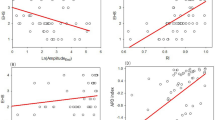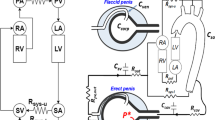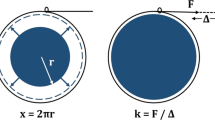Abstract
A specialized near infrared spectrophotometry instrument for noninvasive, continuous monitoring of the hemodynamic events of erection in the human penis has been developed. Its potential application for the diagnostic evaluation of erectile dysfunction was investigated. Thirty-eight patients and 18 volunteer subjects underwent penile near infrared spectrophotometry using an optical sensor probe with wavelength selectivity for hemoglobin absorption spectra. Penile blood volume changes and their time courses were measured following intracavernous pharmaco-stimulation in patients and visual sexual stimulation in volunteers. Spectrophotometric results were compared with results obtained simultaneously using color duplex ultrasonography, strain gauge penile circumference monitoring, penile tonometry, and clinical assessments. Spectrophotometric recordings of penile erection showed measurable blood volume changes consistent with the hemodynamic events of this biological function. Blood volume per cent (BV%) increase correlated with clinical ratings of erection quality (P<0.001), penile rigidity measurements (P<0.005), and penile circumference increases (P<0.0001), and it correlated with mean peak systolic velocity measurements when BV% increase was restricted to values less than 50% (P<0.001). The time to reach half the maximum blood volume change (BV T½) correlated directly with the time to reach half the maximum penile circumference size increase (P<0.001), whereas BV T½ correlated inversely with mean resistive index measurements only when BV T½was restricted to values greater than 120 s (P<0.05). Spectrophotometric criteria consisting of BV % less than 35% and BV T½ greater than 120 s affirmed the diagnosis of severe erectile impairment with a similar degree of accuracy as standard ultrasonographic criteria (P<0.002). Penile near infrared spectrophotometry is a safe, inexpensive and simply used biomedical optics technique that provides quantitative measurements of the vascular physiology of penile erection and appears to offer clinical utility in the diagnosis of vasculogenic erectile dysfunction.
This is a preview of subscription content, access via your institution
Access options
Subscribe to this journal
Receive 8 print issues and online access
$259.00 per year
only $32.38 per issue
Buy this article
- Purchase on Springer Link
- Instant access to full article PDF
Prices may be subject to local taxes which are calculated during checkout
Similar content being viewed by others
Author information
Authors and Affiliations
Rights and permissions
About this article
Cite this article
Burnett, A., Allen, R., Davis, D. et al. Near infrared spectrophotometry for the diagnosis of vasculogenic erectile dysfunction. Int J Impot Res 12, 247–254 (2000). https://doi.org/10.1038/sj.ijir.3900609
Received:
Accepted:
Published:
Issue Date:
DOI: https://doi.org/10.1038/sj.ijir.3900609
Keywords
This article is cited by
-
Probing penile hemodynamics by using photoplethysmography as objective indicators for male erection quality and sexual function
Scientific Reports (2021)
-
A discrepancy of penile hemodynamics during visual sexual stimulation observed by near-infrared spectroscopy
BMC Urology (2015)
-
The engineering analysis of bioheat equation and penile hemodynamic relationships in the diagnosis of erectile dysfunction: part I—theoretical study and mathematical modeling
International Journal of Impotence Research (2008)



